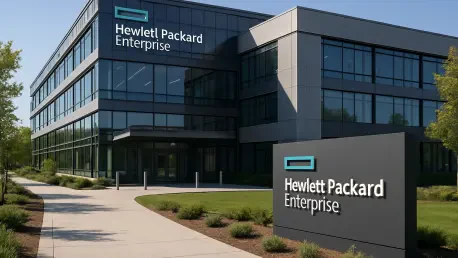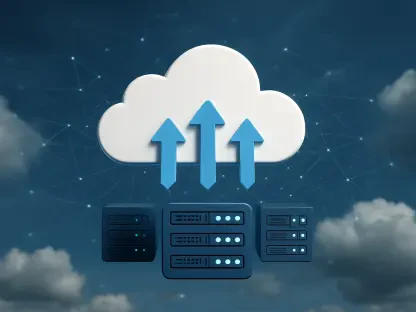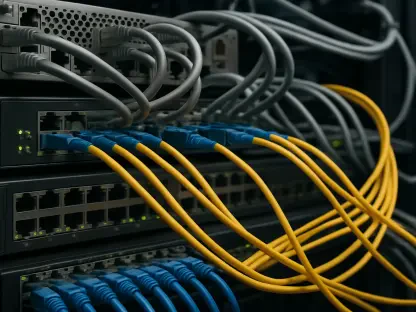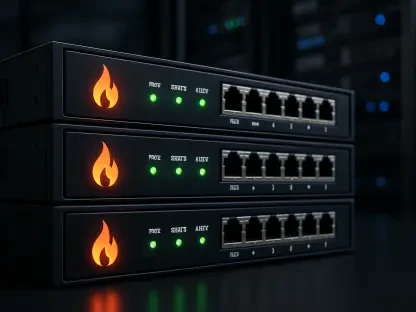I’m thrilled to sit down with Matilda Bailey, a renowned networking specialist with a sharp focus on cutting-edge cellular, wireless, and next-gen solutions. With her extensive experience in the enterprise networking space, Matilda offers a unique perspective on the recent high-profile acquisition of Juniper Networks by HPE and what it means for the future of AI-driven networking and market dynamics. In this conversation, we dive into the strategic motivations behind the merger, the role of Juniper’s Mist AI technology, the challenges of competing with industry giants, and how enterprise customers are reacting to this significant shift.
What drove HPE to acquire Juniper Networks, and how does this fit into their broader vision as an enterprise-focused company?
HPE’s acquisition of Juniper Networks is primarily about filling gaps in their portfolio and strengthening their position in the networking space. While HPE already had a foothold through Aruba, Juniper brings a deeper expertise in pure networking, especially with a strong presence in the service provider market. This move allows HPE to offer a more comprehensive solution to enterprises, blending compute and networking in a way they couldn’t before. Strategically, it aligns with HPE’s goal of being a one-stop shop for enterprise IT needs, focusing on end-to-end solutions that can drive digital transformation. It’s about capturing more of the enterprise wallet share and positioning themselves as a serious contender against market leaders.
How do you see Juniper’s specific strengths enhancing HPE’s existing offerings, particularly compared to what Aruba already brought to the table?
Juniper’s real strength lies in its advanced routing and switching technologies, as well as its AI-driven innovations like Mist AI. Aruba has been strong in wireless and campus networking, but Juniper adds a layer of sophistication in core and edge networking, especially for complex, large-scale deployments. Mist AI, in particular, is a game-changer—it’s not just about managing networks but optimizing them with predictive analytics and automation. This gives HPE a chance to push beyond traditional networking into a more intelligent, proactive approach, something Aruba alone couldn’t fully deliver. It’s a complementary fit that broadens HPE’s appeal across different enterprise segments.
What’s your take on how the combined company might position itself in the market post-merger, and who do you think will take the lead in shaping its identity?
The positioning will likely hinge on emphasizing innovation, especially around AI and integrated solutions. I think HPE will remain the dominant brand in the short term—it’s the bigger entity with a broader portfolio—but Juniper’s influence could grow if their AI and networking expertise start driving significant wins. The challenge is crafting a unified identity that doesn’t confuse customers. Will it be seen as HPE with a networking boost, or a true hybrid? I suspect 2025 will be pivotal in seeing whether HPE leans into Juniper’s strengths like Mist AI to redefine itself or sticks to a more conservative, HPE-centric approach. It’s a delicate balance of leveraging both legacies without diluting either.
Speaking of AI, how critical is Juniper’s Mist AI technology to the success of this merger?
Mist AI is absolutely central. It’s one of the most recognized AI operations tools in the enterprise space, offering real value through automation and insights that can reduce downtime and improve network performance. For HPE, it’s not just an add-on—it’s a differentiator that could help them stand out in a crowded market. If they can integrate Mist AI effectively across their portfolio, it could be the linchpin that justifies the acquisition to shareholders and customers alike. Without leveraging it fully, they risk this just being another expensive merger with limited impact.
Do you think HPE can use Mist AI to carve out a competitive edge over giants like Cisco, and if so, how?
Absolutely, but it won’t be easy. Cisco has a massive incumbent advantage with deep customer loyalty. Mist AI gives HPE a shot at differentiation by offering superior network management through AI-driven insights—think predictive troubleshooting and automated optimizations that save time and money. If HPE can bundle this with their data center solutions, they could appeal to enterprises looking for integrated, future-ready setups. The key is to market it not just as a tool, but as a transformative approach to networking. They’ll need compelling case studies and aggressive sales strategies to pull customers away from Cisco’s entrenched position.
What challenges do you foresee in integrating Mist AI with HPE’s existing systems, and how might they address them?
Integration is tricky because HPE’s existing management tools and Juniper’s systems weren’t built to work together natively. There’s a risk of creating a clunky, disjointed experience if they don’t invest in seamless interoperability. HPE needs to prioritize a unified platform—perhaps by developing APIs or middleware that bridge the two ecosystems—while ensuring that the user experience remains intuitive. They’ll also need to train their sales and support teams on the combined offerings to avoid confusion. It’s a heavy lift, but if they focus on a phased rollout with customer feedback loops, they can minimize disruptions.
Turning to enterprise customers, what kind of feedback are you hearing about this merger, and are they optimistic or cautious?
The feedback is mixed. Some enterprises are excited about the potential for a more integrated solution—combining HPE’s compute power with Juniper’s networking prowess is appealing on paper. But there’s also a lot of skepticism. Many worry about execution—will HPE deliver on promises of seamless integration, or will this be another merger that overpromises and underdelivers? There’s also concern about support and whether the combined company will prioritize their needs over internal restructuring. HPE needs to address these doubts head-on with clear communication and early wins.
Given the challenge of stealing market share from competitors, what unique value can HPE offer to sway customers to their side?
HPE’s unique value lies in their ability to offer a tightly integrated stack—servers, storage, and now advanced networking with AI capabilities. They can pitch themselves as a partner for end-to-end digital transformation, especially for enterprises building out AI-driven data centers. By leveraging their existing relationships in data center deals, they can bundle Juniper’s gear and Mist AI as part of a broader solution, making the switch less about abandoning a competitor and more about embracing a holistic upgrade. It’s about selling a vision of efficiency and innovation, not just a product.
What is your forecast for how AI will shape the future of enterprise networking, especially with players like HPE and Juniper in the mix?
I think AI is going to be the defining factor in enterprise networking over the next decade. It’s not just about managing networks anymore—it’s about predicting issues before they happen, optimizing performance in real-time, and enabling entirely new use cases like self-healing infrastructures. For HPE and Juniper, the combined strength of Mist AI and HPE’s data center expertise positions them well to lead in this space, but only if they move aggressively. Competitors aren’t standing still, and the race to dominate AI-driven networking will intensify. I expect we’ll see rapid innovation, with AI becoming the backbone of every networking solution within five years, and HPE could be at the forefront if they play their cards right.









